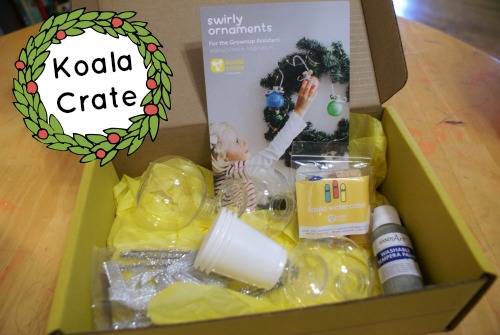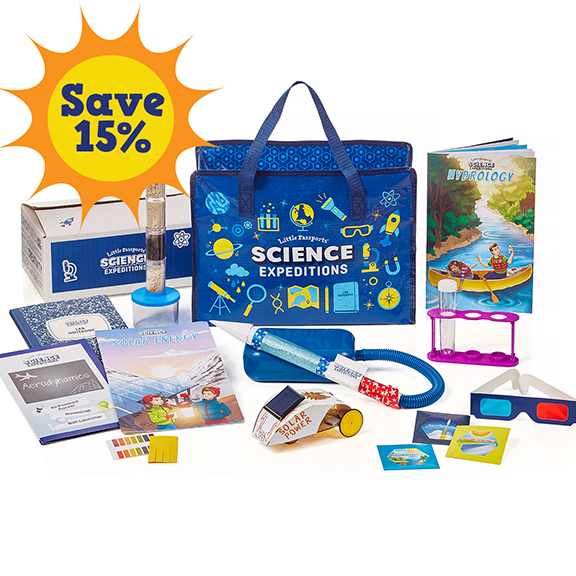
This post is part of 15 Days of Montessori for the Holidays.
It’s nearing that time of the year when the calendar fills up, you have to decide when you’re seeing which side of the family, you find yourself dragging behind on your to do list, and probably carrying more guilt than you need to bear.
If you’re struggling with the weight of what the world says Thanksgiving and Christmas should be or you’re overflowing with excitement of all you could do, can I just remind you,
It doesn’t have to be perfect and you don’t have to do it all.
Let’s make peace with the holidays this Thanksgiving and Christmas season. Let’s purposely choose more joy and less stress. Loosen the expectations, cut the lists in half, simplify the projects, and just enjoy.
Seek to create intentional time
being instead of doing.
Celebrate the season with room to breathe. Remember, the holidays aren’t contingent on gifts or crafts or the perfect dinner spread or exquisitely coordinated outfits for the perfect family photo.
Thanksgiving and Christmas are a time to come together to celebrate the love of family, gratitude for all we’ve been given, and the gift of Christ as Savior. All the extra trimmings and trappings? Let them be.
 1. Examine Your Holiday Traditions
1. Examine Your Holiday Traditions
Traditions are built over time as a way of marking what’s important to our families. Holiday traditions is an area that often runs away from us, and before we know it our traditions are controlling our holiday rather than helping us prize what’s most important.
A way to help amplify the joy, lessen the stress, and simplify the holidays is to identify the traditions you currently have and evaluate how they are working for your family.
-
Are your traditions enjoyable? Do they appeal to the whole family—your spouse and your children?
-
Do they stay within your budget?
-
Do they propel your family closer to each other and, if Christians, toward Christ?
- Do they promote values and ideals you want to pass down to your children?
Finally ask, “Why do we do this?”
Is this tradition something you’ve always done, decided to do one year and it just stuck? Was it a tradition passed on from your families, do you even like it, or do you feel compelled to do it?

Sometimes simplifying means redefining our traditions, or perhaps, even eliminating traditions that no longer work for your family.
A Gentle Reminder: As a young family, you don’t have to continue every tradition each of your respective families have done. Pick what you want, but remember you’re making your own family now. This is your family–not your parents, not your grandparents. You can break from past traditions to adopt new ones that fit the vision for your family.
2. Simplify with Yearly Priorities
One lesson I’ve learned is every good idea doesn’t need to be executed immediately. This can be especially true during the winter holiday season when new ideas, activities, and traditions pop up everywhere.
How do we make these great ideas and traditions work for us? By choosing an intangible priority and tangible priority for your family each year.
Think of your intangible priority as the feel you want Thanksgiving or Christmas to have, or what you want to impart to yourself and family. An intangible priority could be a focus on hope, gratitude, joy, love, humility, service, generosity/cheerful giving, peace, or community (ie, building relationships).
To help achieve that priority, let your tangible priorities be a means to move forward in your intangible priorities. Tangible priorities could be following an Advent calendar/devotional, participating in service projects, homemade gifts, buying less presents so you can give to those in need (local or far away) or to save money , visiting family, or throwing a great party.
Plan for the holiday you wish to enjoy.
3. Loosen Your Expectations
We often live under expectations without even realizing it. It’s important to remember not all expectations are negative. It’s good to know what you or your family is hoping for and to honor what is within reason. However, many of the expectations we operate under (especially during times of stress) are unrealistic and unhealthy.
When it comes to the holidays, expectations could be mandatory visits to both families even if it means filling up on two Christmas dinners and dragging tired, overstimulated kids across town or to the next county. It doesn’t matter if they enjoy it, as long as they’re there. Or matching present for present what another relative is giving you or a family member. Perhaps you’ve put on the expectation that to make Christmas special you have to do a craft every day until Christmas.

While you might feel like you’re taking one for the team and making everyone happy, unrealistic or unhealthy expectations breed unhealthy behaviors. When we wear the expectations of others to the point we feel we must do this or things won’t be right, someone will be horribly disappointed or even mad at us, we’re letting this real or perceived expectation control our life.
We’re seeking to please people rather than do what’s best for our family and spirit.
- What expectations have you put on yourself? What’s healthy? What’s realistic?
- What expectations does your immediate family (or those you live with) have? Are they realistic? What’s important to them at/about the holidays?
- What expectations does your extended family have? Are they healthy? Are they realistic?
Keep expectations, hopes, or wishes that are healthy and meet the goal, the heart, and mission of your family.
Don’t be afraid to disappoint others. Some will be. Talk to them about why these changes are important to you and your family.
4. Cut Your To Do List
You knew this one was coming, right? If you made a list of all the things you needed to do, make, buy, wrap, cook, or events on the calendar, how long would your list be? Does even just thinking about it stress you out?
Thanksgiving is a time to be grateful and Christmas is the celebration of the birth of Christ. Neither are centered around the glorification of more stuff and stress. Remember, being over doing.
Let your to do list reflect the heart of the season, your family priorities and the traditions you hold dear. Plan/rewrite your to do list as a means of pursuing your tangible and intangible priorities. Your to do list, like your traditions, is a tool not the driving force of your season.
Start writing a list of all the things you want to make, do, feel, be, watch, listen to, bake, attend. How long did your list get? Is it relatable? Is it breathable?
Aim to cut it in half. What can you let go of? What isn’t going to assist you in your Christmas priorities and family traditions? What will encourage you to pursue real joy this holiday season? Keep that.
Make a new list. Is it realistic and breathable? Does it reinforce traditions that are important to you? Will it encourage your tangible and intangible priorities? Can you sanely accomplish it and still have joy?

5. Make Room to Breathe
So often we get to the last few weeks of November and before we know it we’re over committed and stressed out by all the good and fun things to do or attend. They’re not bad, but they may not be best for you and your family, at least right now.
After you’ve filled in your calendar, wrapped the gifts, and planned all the parties, I hope you have found room to breathe. To laugh and dance and play. I hope you’ll find a few days where spontaneity takes you by surprise, room in your days and heart for little joys.
Don’t spend the holiday season feeling trapped in a tightly packed schedule or even a light schedule. Leave room for joy. And be brave to do what’s best for your family.

Don’t forget to check out other posts in the Montessori Bloggers Network Montessori for the Holidays series! Tomorrow you can find some great ideas for handmade holiday gifts for Montessori grown ups from I Believe in Montessori. Be sure to check out Living Montessori Now’s Montessori Christmas tree decorating activity on Thursday and The Kavanaugh Report’s post on Christmas sensory activities for toddlers.
Missed a few days in the series? You can always find them here:
The Montessori Notebook ~ Montessori by Mom
When Hippos Talk ~ Little Fingers at Work ~ At Kid Level
Magical Movement Company ~ Christian Montessori Network
Montessori Unfiltered ~ Mama’s Happy Hive ~ Montessori Nature
Welcome to Mommyhood ~ Our Montessori Home
I Believe in Montessori ~ Living Montessori Now
The Kavanaugh Report ~ The Natural Homeschool
Age of Montessori
 Getting outside isn’t my favorite. I enjoy it, but it’s not my natural inclination. I’d rather be curled up with a book or a project. But it’s good. I like it.
Getting outside isn’t my favorite. I enjoy it, but it’s not my natural inclination. I’d rather be curled up with a book or a project. But it’s good. I like it.  As much as I want us to be outside people, there’s always a certain amount of stress that’s going to come with it. Three kids plus a 6-week-old, the length of the trail, planning feedings, and potty needs…yeah. I tend to keep my expectations loose knowing there’s always room for some obstacle.
As much as I want us to be outside people, there’s always a certain amount of stress that’s going to come with it. Three kids plus a 6-week-old, the length of the trail, planning feedings, and potty needs…yeah. I tend to keep my expectations loose knowing there’s always room for some obstacle. The river was higher than I had ever seen it and with one kid being a tad bit reckless, even after we saw a dog almost drown fetching a stick. The picture of the kids by the water…there’s a row of rocks we usually cross over too a little island. To our right there’s a small grouping of trees usually with a few feet of sand before the water. Today it was surrounded. A fallen tree the kids climb on in the summer was completely submerged, except for a foot of one limb, which this poor dog was desperate to bring back to his owner, nearly getting pulled away by the current while he held on (you can see a tiny speck of his white head in the picture).
The river was higher than I had ever seen it and with one kid being a tad bit reckless, even after we saw a dog almost drown fetching a stick. The picture of the kids by the water…there’s a row of rocks we usually cross over too a little island. To our right there’s a small grouping of trees usually with a few feet of sand before the water. Today it was surrounded. A fallen tree the kids climb on in the summer was completely submerged, except for a foot of one limb, which this poor dog was desperate to bring back to his owner, nearly getting pulled away by the current while he held on (you can see a tiny speck of his white head in the picture).


















 Today begins the first day of the Montessori Bloggers Network’s
Today begins the first day of the Montessori Bloggers Network’s 





























